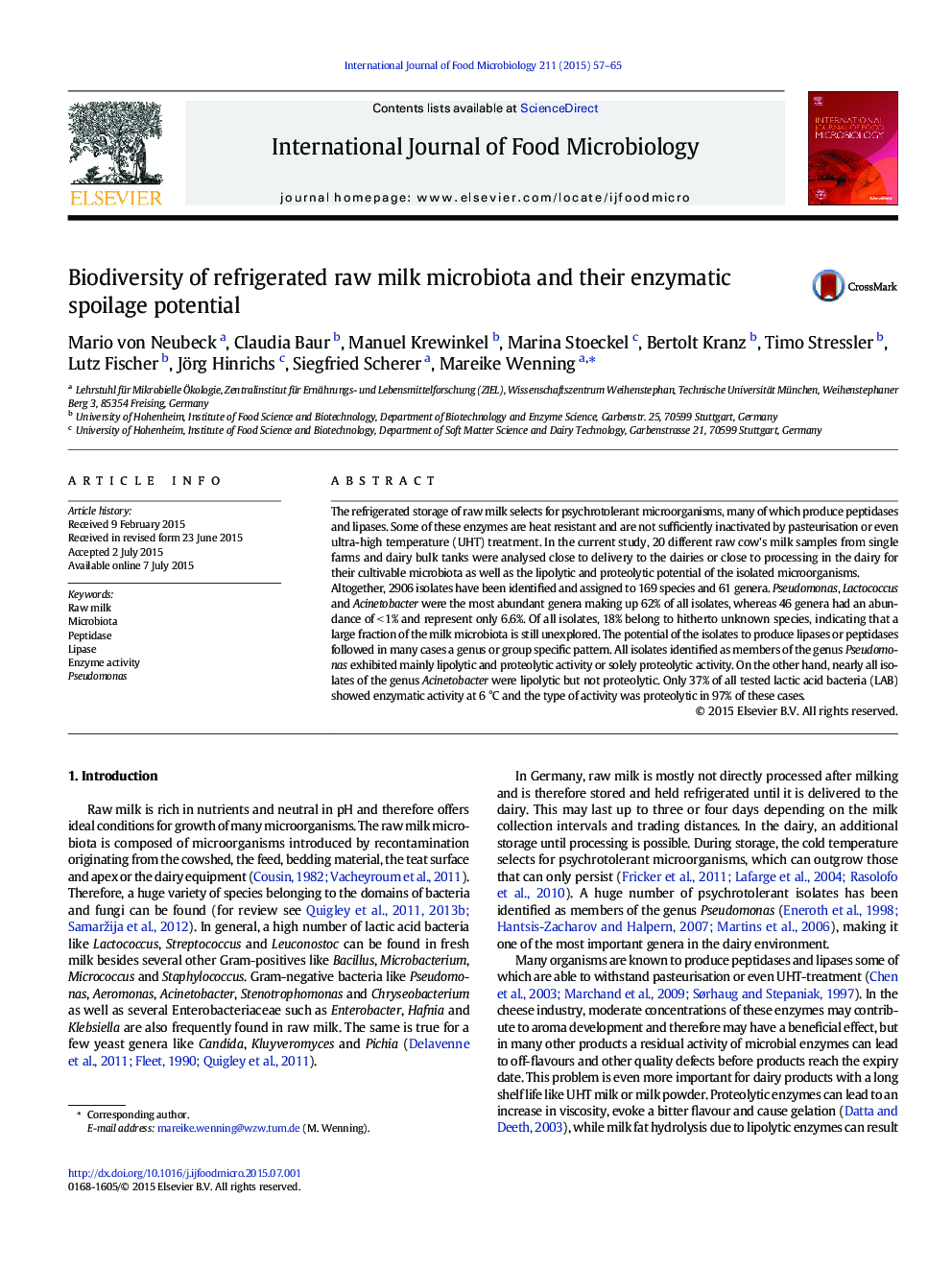| Article ID | Journal | Published Year | Pages | File Type |
|---|---|---|---|---|
| 4366512 | International Journal of Food Microbiology | 2015 | 9 Pages |
•2906 bacteria and yeasts have been isolated and identified at species level.•18% of the isolates belonged to yet unknown species.•Pseudomonas is the predominant genus and shows highest lipolytic and proteolytic activity.•Genus or taxon specific tendencies in enzymatic activity were observed.
The refrigerated storage of raw milk selects for psychrotolerant microorganisms, many of which produce peptidases and lipases. Some of these enzymes are heat resistant and are not sufficiently inactivated by pasteurisation or even ultra-high temperature (UHT) treatment. In the current study, 20 different raw cow's milk samples from single farms and dairy bulk tanks were analysed close to delivery to the dairies or close to processing in the dairy for their cultivable microbiota as well as the lipolytic and proteolytic potential of the isolated microorganisms.Altogether, 2906 isolates have been identified and assigned to 169 species and 61 genera. Pseudomonas, Lactococcus and Acinetobacter were the most abundant genera making up 62% of all isolates, whereas 46 genera had an abundance of < 1% and represent only 6.6%. Of all isolates, 18% belong to hitherto unknown species, indicating that a large fraction of the milk microbiota is still unexplored. The potential of the isolates to produce lipases or peptidases followed in many cases a genus or group specific pattern. All isolates identified as members of the genus Pseudomonas exhibited mainly lipolytic and proteolytic activity or solely proteolytic activity. On the other hand, nearly all isolates of the genus Acinetobacter were lipolytic but not proteolytic. Only 37% of all tested lactic acid bacteria (LAB) showed enzymatic activity at 6 °C and the type of activity was proteolytic in 97% of these cases.
